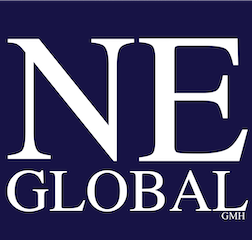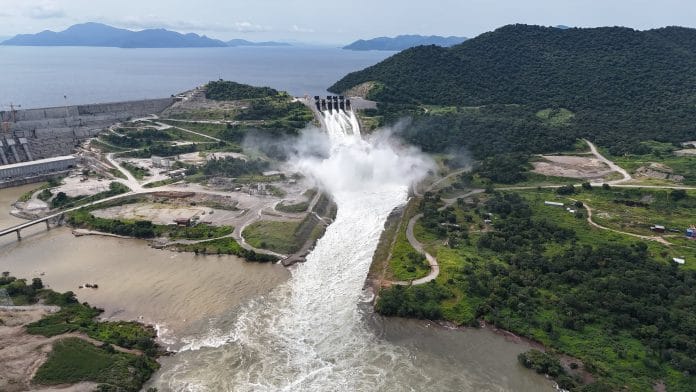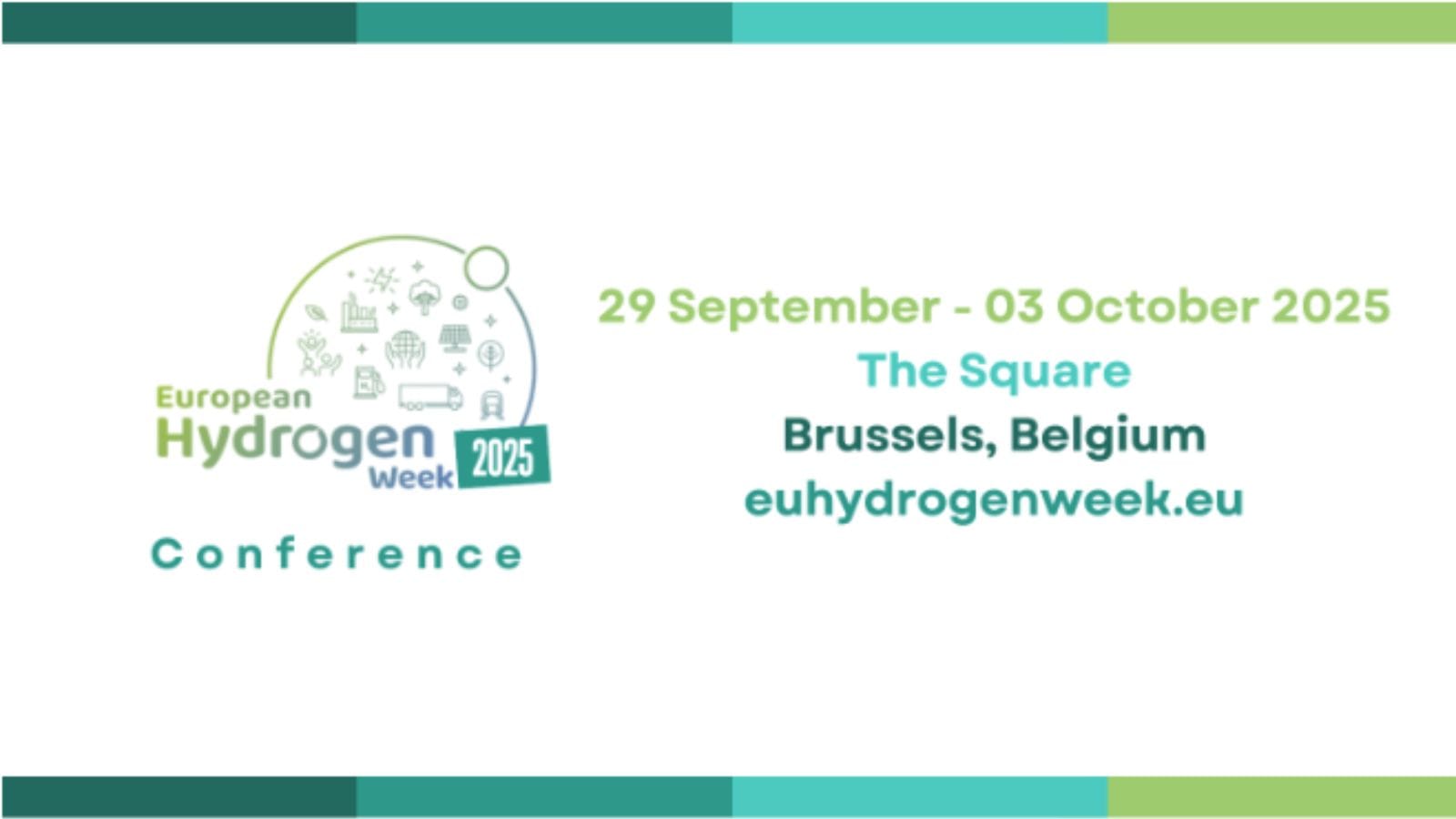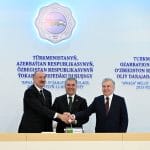Ethiopia inaugurated on September 9 the largest hydropower project ever built in Africa which could transform the country into an electricity exporter and boost economic development, marking the beginning of a new era for the African country. But the inauguration of the Grand Ethiopian Renaissance Dam (GERD) also intensifies regional tensions as downstream states, especially Egypt and Sudan depend heavily on Nile waters.
“A monumental infrastructure designed and constructed by Webuild, the GERD marks the beginning of a new era for the country, placing it at the heart of the continent’s green transition,” Italy’s Webuild SpA, which began work on it in 2011, said in a press release. The official ceremony was attended by Pietro Salini, Chief Executive of Webuild, alongside Ethiopian Prime Minister Abiy Ahmed Ali and the Heads of State of African countries that share with Ethiopia a common goal of growth and unity, Webuild added.
On September 8-10, Ethiopia hosted the Second Africa Climate Summit with some African leaders participating also attending GERD grand opening celebrations during the second day of the summit.
Roughly half of Ethiopians lack reliable access to electricity. With an installed production capacity of more than 5,000 MW and an expected annual output of 15,700 GWh, GERD — commissioned by Ethiopian Electric Power — can generate energy equivalent to three medium-sized nuclear power plants, addressing chronic energy shortages for millions and positioning the country as a regional power exporter. Its reservoir stretches 172 kilometers, able to hold up to 74 billion cubic meters of water, making the GERD the largest hydropower project in Africa.
The main dam on the Abbay River, known to the rest of the world as the Blue Nile, stands 170 meters tall and spans 1,800 meters at the crest, with a volume of 10.7 million cubic meters of concrete — earning it the record as the largest roller-compacted concrete (RCC) gravity dam ever built in Africa by volume. On December 28, 2014, the construction site set a world record by laying 23,000 cubic meters of RCC in just 24 hours.
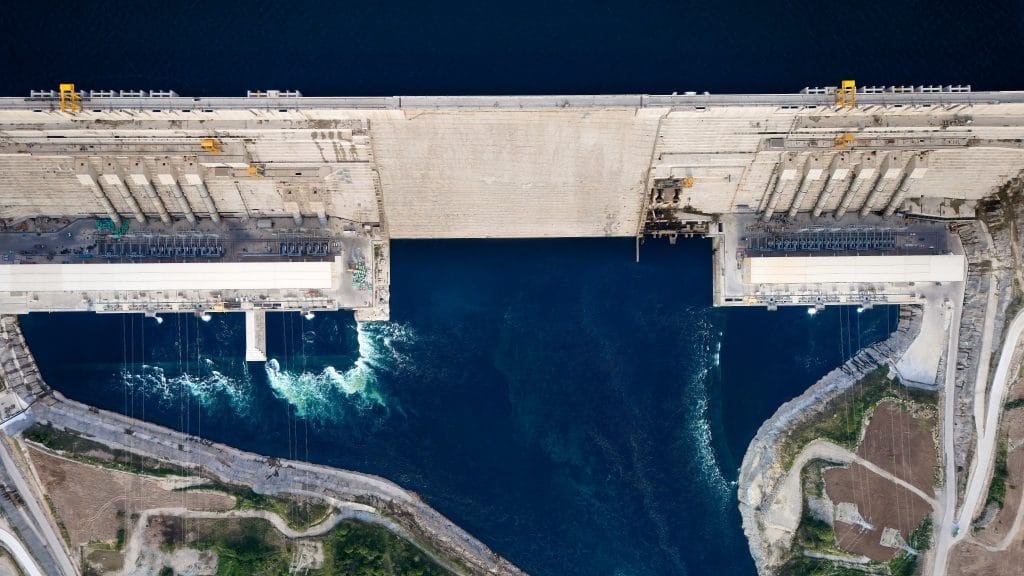
The GERD has transformed the surrounding area. A new town has emerged around the site, complete with a hospital, two equipped medical clinics, a school, sports facilities, a bakery producing injera (a traditional Ethiopian flatbread), and road infrastructure. Over 25,000 people — mostly Ethiopians — worked on the project, according to Webuild.
“The hydropower project embodies a long-term vision and serves as a tool for national growth, aligning itself with the goals of Italy’s Mattei Plan under the Italian Prime Minister Giorgia Meloni’s government, which aims to involve Italian companies in major projects that support the development of African nations,” Webuild said.
Egypt and Sudan’s opposition to the dam
Both Egypt and Sudan have warned that the dam could bring grave consequences. The Blue Nile originates in Ethiopia’s Lake Tana before converging with the White Nile in Sudan, creating the larger Nile River, which flows north through Egypt and into the Mediterranean Sea.
Following a consultative meeting of the 2+2 Mechanism of the Ministers of Foreign Affairs and Water Resources of the Arab Republic of Egypt and the Republic of Sudan on September 3, the Egyptian Ministry of Foreign Affairs said in a statement the two sides outlined that Sudanese and Egyptian water security constitutes an indivisible whole, and they reaffirmed their categorical rejection of any unilateral measures in the Eastern Nile Basin that may cause harm to their water interests.
“The consultations also addressed developments regarding the Ethiopian Dam. The two parties agreed that the Ethiopian Dam, in violation of international law, entails serious consequences for the two downstream states and represents a continuous threat to stability in the Eastern Nile Basin in accordance with international law, particularly with regard to the grave risks arising from Ethiopia’s unilateral steps to fill and operate the dam, as well as those related to dam safety, unregulated water discharges, and the handling of drought conditions,” the statement read.
“Ethiopia must revise its policy in the Eastern Nile Basin to restore cooperation among the basin countries. Both sides further affirmed that the issue of the Ethiopian Dam remains a matter among the three states (Egypt, Sudan, Ethiopia) and rejected any attempts to involve other basin countries in this contentious issue,” Egypt’s Foreign Ministry added.
However, Ethiopia’s Prime Minister Abiy Ahmed has argued that the GERD project is not a threat to Egypt and Sudan, but a shared opportunity and a symbol of regional cooperation and mutual benefit, accelerating the continent’s green transition.
Many sensitive issues going on in the Horn of Africa
The dispute highlights the fragile balance between national sovereignty and transboundary water security. The GERD could become either a catalyst for regional integration through economic cooperation and power-sharing, or a flashpoint fuelling instability, diplomatic rifts, and potential conflict in the Horn of Africa and the wider Middle East, a former diplomat in Addis Ababa said.
Italy’s Webuild, which focuses on large complex infrastructure, has played a leading role in Ethiopia for over 70 years, completing 30 projects, particularly in the hydroelectric sector. These include the Beles Multipurpose Project, featuring an underground power station — the largest in the country at the time of its inauguration — and the Gibe III dam on the Omo River, standing 250 meters tall and, at the time of its opening, the tallest RCC technology dam in the world. Currently under construction is the Koysha dam, Ethiopia’s second-largest hydroelectric project after the GERD, which will further contribute to the country’s energy transition.
